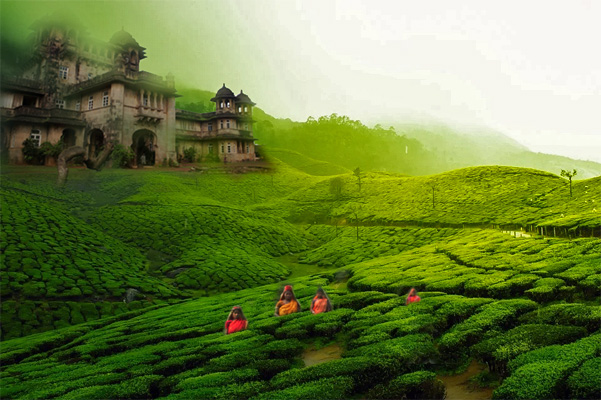The Orgin Of Tea - Indian Legend
Darma, third son of Koyuwo, King of India, a religions high priest from Siaka (the author of that Eastern paganism about a thousand years before the Christian era), coming to China, to teach the way of happiness, lived a most austere life, passing his days in continual mortification, and retiring by night to solitudes, in which he fed only upon the leaves of trees and other vegetable productions.
After several years passed in this manner, in fasting and watching, it happened that, contrary to his vows, the pious Darma fell asleep! When he awoke, he was so much enraged at himself, that, to prevent the offence to his vows for the future, he got rid of his eyelids and placed them on the ground.
On the following day, returning to his accustomed devotions, he beheld, with amazement, springing up from his eyelids, two small shrubs of an unusual appearance, such as he had never before seen, and of whose qualities he was, of course, entirely ignorant.
The saint, however, not being wholly devoid of curiosity--or, perhaps, being unusually hungry--was prompted to eat of the leaves, and immediately felt within him a wonderful elevation of mind, and a vehement desire of divine contemplation, with which he acquainted his disciples, who were eager to follow the example of their instructor, and they readily received into common use the fragrant plant which has been the theme of so many poetical and literary pens in succeeding ages.
DID YOU KNOW?
Since India didn't have any record of date, or facts, on stone or tablet, or ever handed down a single incident of song or story, apart from the legend, as to the origin of tea, until a quite recent period botanists believed that the tea plant was a native of China, and that its growth was confined to China and Japan. But it is now definitely known that the tea plant is a native of India, where the wild plant attains a size and perfection which concealed its true character from botanical experts, as well as from ordinary observers, for many years after it had become familiar to them as a native of Indian forests.
While everyone knows now where tea originated, no one knows for sure when the now worldwide custom of tea infusion began.
Although the legend credits the pious East Indian with the discovery of tea, there is no evidence extant that India is really the country where the custom of tea infusion began. Most likely that plant was slumbering on the slopes of India, unpicked, unsteeped, undrunk, unhonored, and unsung.

Great Craft Creations
Surprise your loved ones with great craft creations, decorate your house, or make unique gifts...Did You Know?
If you need some dry material instantly you can use your microwave oven for making what you need. To dry herbs or flowers in the microwave oven instantly you will need SILICA GEL. Silica gel is a substance used to dry delicate flowers too, such as roses or calendula, as it preserves their forms and colors well. Silica gel can usually be found in craft stores.
It is very simple to dry flowers with a silica crystals, just use microwave safe container with a 1" (2,5 cm) thick layer of the silica crystals and place your flowers on the top allowing about 1-inch of space around the sides and between each flowers. Put another 1-inch layer on the top of flowers and then microwave on cca 50 % power for approximately 2-3 minutes, depending on the type of your microwave and flowers. It is better to check the material progress an add some more times if needed. Flowers and leaves often have different drying times, microwave them separately for better result.
Never use silica gel containers for preparing food after you use them for drying flowers, because they often absorbs pesticides from plants as they dry.

